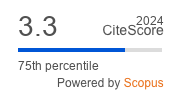Article | Open Access
Overlap Between Industrial Niching and Workplace Segregation: Role of Immigration Policy, Culture and Country of Origin
| Views: | 2974 | | | Downloads: | 1731 |
Abstract: This article focuses on two dimensions of labour market integration, sorting into different industries (niching) and sorting into workplace establishments (segregation) by share of migrant workers. We seek to understand to what degree these two dimensions of immigrants’ lack of labour market integration—niching and segregation—overlap with each other. The study is based on Finnish individual, panel and relational registry data, and we focus on the three largest immigrant groups—Estonians, Russians and Swedes—who have arrived from countries with different wealth levels to the Helsinki metropolitan area. By applying generalised structural equation modelling, we estimate industrial niching and workplace segregation—measured as a degree of overconcentration of immigrants in particular industries and workplace establishments, respectively—jointly. Our main findings show a strong overlap between niching and segregation for all ethnic groups. Segregation and niching levels are the highest among Estonians, but very similar for Russians and Swedes. These findings do not support the cultural similarity argument in immigrant labour market integration. Rather, immigration policy and origin country wealth level may be determinant. Additionally, we found that females are more likely than males to be employed simultaneously in niched industries and segregated workplace establishments, supporting the thesis of gender-based networks.
Keywords: country of origin wealth level; immigration; labour market; niching; segregation
Supplementary Files:
Published:
© Anastasia Sinitsyna, Karin Torpan, Raul Eamets, Tiit Tammaru. This is an open access article distributed under the terms of the Creative Commons Attribution 4.0 license (http://creativecommons.org/licenses/by/4.0), which permits any use, distribution, and reproduction of the work without further permission provided the original author(s) and source are credited.


